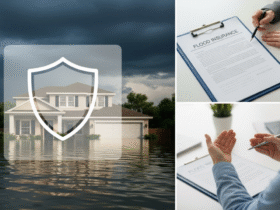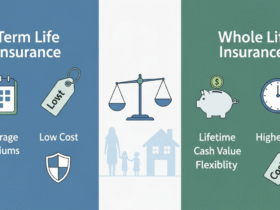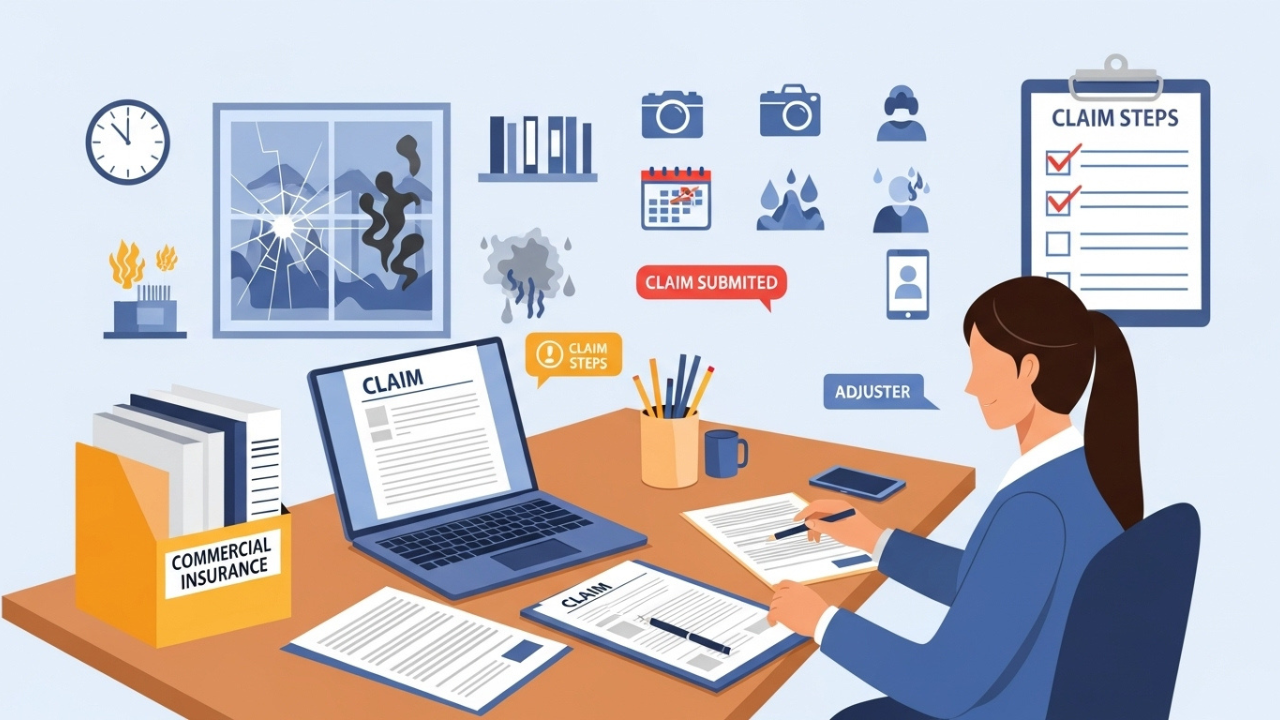Every business faces one or another risk, be it a retail shop or a tech company. A business can be disrupted in numerous ways such as via fire, theft, floods, legal problems, broken equipment, and much more.
Such risks have the potential to alter the course of a business and without proper commercial insurance, it’s nearly impossible to weather the storm. Justify How to file a commercial insurance claim? One needs to properly follow commercial claim procedures to ensure they receive back what was lost at a quicker pace. Filing commercial insurance claims with the right methods saves one time and effort whilst guaranteeing full coverage.
This piece is a practical guide outlining each step from filing a claim to receiving final payments.
Key Takeaways
- Any type of insurance requires one to keep the provider in the loop so communications must be timely.
- Every claim is accompanied by separate filing documents, thus, providing photos along with reported files will only benefit the process.
- One should consult and update their insurance adjuster on a consistent basis to ensure everything is in order.
- Understand the details of the claim to avoid misunderstandings and mistakes.
- Always be on top of tracking the claim status to avoid unnecessary delays.
Why It’s Important to Know How to File a Commercial Insurance Claim
When it comes to filing a claim, an unfortunate event poses a threat to the business. Protecting a business from associated risks is not as easy as it seems. There exists the misconception that all insurance policies provide full payment during claim filing; however it is not uncommon for payments to be withheld, reduced, or delayed because of policy loopholes during filing.
Commercial policies are designed to help businesses overcome financial lags by providing timely assistance. Proper claims filing aids the injured party to receive the needed support as well as mitigates stress.
If this is your first time dealing with commercial insurance, don’t worry. Take a look at this guide and help yourself.
Make Sure Everyone Is Safe
Make it your first priority to save all employees and customers during life threatening situations such as accidents, burglaries or even injuries during fire incidents or break outs. In case of any unsavory situations where injuries are involved, call relevant services to take control of the situation; don’t enter damaged structures until safety officials say it’s okay.
Evacuating premises evasive means without a fire is impossible. Do not attempt securing equipment during a life-threatening emergency. That is only possible after normalcy is restored.
Contact Your Insurance Provider as Soon as Possible
Most insurance firms have rules about how quickly an incident must be reported. The longer an insurance claim is delayed, the higher the risk of losing adequate compensation.
- Most firms have 24/7 support, enabling claim reporting at any time.
- When you call, be ready to provide:
In regard to elevating an companies business angle, it is crucial to provide a policy number, type of incident, and detailed description surrounding the event.
Claim files can be active recorded but not actually received without the case being presented, therefore the details preferably need to be added later.
Review Your Commercial Insurance Policy
Take a moment to go through your policy. Having the right expectations for your insurance policy requires understanding what your insurance covers and what it doesn’t.
Find the following primary points:
- Claim triggers (fire, storm, vandalism, water damage, etc.)
- Policy-trigger exclusions (floods, earthquakes, general wear and tear, etc.)
- Insurance cap (claim limit)
- Exclusions (what you must pay without reimbursement)
Submission deadlines for filing and resolving a claim adaptive renegotiation Staying within the predefined limits lets you gather the documentation efficiently instead of needing to meet unanticipated requirements.
Document the Damage Thoroughly
Capture Damage Details Methodically
As with any type of loss, insurance companies place heavy reliance on documentation. Your chances of a hassle-free approval depend on how fully and easily the claim can be verified.
As damage photographs get captured, make sure they show clearly-lit close-up and wide-angle shots so that all detail and the extent of damage interpretation is possible.
In addition to photos, compile a written documentation that lists:
- Items that have been lost or damaged
- Valuation that has been estimated for every individual item
- Documents like receipts or invoices, when present
- Serial numbers or asset tags, when appropriate
- Windows that are broken and have been temporarily covered with a tarp
Statements should be sought from customers or employees who happened to be present so that they can document their observations and contact details . This will come in handy during the process of claiming the loss.
Should you be required to halt business operations, make a record of income that is being lost for every single day. Preserve communication records, canceled bookings, or sales records. If your policy covers that type of interruption, this could support the claim as well.
Submit the Claim and Work with the Adjuster
Given that you have completed the necessary steps with your insurance company, the next step is submitting your claim. Completing the claim submission step may include using online portals, emailing, or physically mailing insurance documents.
An insurance firm allocates a claims adjuster connected to a particular claim after it has been submitted for processing. This individual’s job is to thoroughly assess the documentary evidence, assess the damage that has been done, and make an evaluation on the payment that would be provided to the insured by the insurer.
During this phase, it is most critical to remain proactive and responsive. If, for example, you are asked for additional images or receipts, responses to these requests should be given promptly. Absolute continuity in responses needs to be maintained even when it feels redundant.
In the course of the assessment, the adjuster may:
- Come to your business premises
- Document relevant business operations including taking relevant pictures
- Inquiry into details regarding the incident
- Evaluate associated costs of the repairs or replacement
Remain engaged in the process. Do not be lured into the exactness of the phrase ‘waiting behind the scenes.’ Inquiries about progress and expected completion dates are perfectly valid.
Track the Claim and Review the Settlement Offer
In the event of an injury or damage covered by your policy, once the insurance adjuster completes their assessment, the insurance firm will provide an initial claim settlement offer. This amount corresponds to their calculations of the damages they will pay, taking into consideration your policy limitations and available documents.
Whenever such an offer is extended, description of the evaluation methodology needs to be provided along with the offer itself, yes, the policy documents. If your policy or evaluation documents are not included, you must demand everything to be provided to you.
If any documents are missing, this will serve as basis for any appeal to reject or halt payment. You have the right to request these documents. Also, a good portion of business owners utilize this poorly known clause, and therefore justify their appeal for denial or suspension of payout.
Assuming the offer is accepted, automatic payment through various methods such as check and direct bank deposits will follow on the processing and issuing of payments. Various businesses restrict how funds are utilized. Even so, you prove best practices by documenting any claim settlement payment amounts received, bank extracts indicating received funds, repair invoices or receipts of moneys spent.
Guidelines to Follow When Your Commercial Insurance Claim Has Been Denied
Some claims are neglected and not all are paid out. In situations where your insurance claim has been denied, seek an explanation and document the reasoning provided. The denial letter should explain in detail the reasons provided per the policy clauses.
Common reasons for denial include:
- Insured peril does not apply to the coverage selected
- Filing after the deadline has lapsed
- Showing a lack of due care on the claimed risk
- Documents that are over incomplete include attestation pages
If you believe the denial is incorrect, you can:
- File addendum appeal to claim files with supporting evidence
- Request a second inspection or endorsement review by different adjusters
- Seek assistance from your state’s insurance department
- Obtain legal counsel or a public adjuster for advisory services
Following these steps, it is also critical to keep a professional demeanor throughout this entire procedure. With better communication, many denials that occur can be fixed.
Ways To Avoid Problems Related To Insurance Claims
We have discussed How to file a commercial insurance claim?. Let us now consider ways to avoid issues in the future. Here are some important recommendations that you should always consider:
- Maintaining the business appropriately and reviewing all purchased policies every calendar year for relevancy to business objectives.
- Retaining backup copies of all relevant documents, contracts, receipts, and inventories.
- Scheduling routine maintenance checks for assets and premises.
- Educating personnel on safety protocols and emergency procedures.
- Installing adequate security alarms, risk-prevention systems, smoke aforementioned detectors, etc.
You can avoid most situations, however, in the event something does happen, being proactive will ensure that regardless of problems faced, claims will be dealt with seamlessly and in no time.
My Opinion
Overwhelming is an understatement, and yes, filing a commercial claim can feel that way sometimes, but if we analyze claims further, we notice it does not need to be so complicated. With the right steps taken, everything comes together much more smoothly than expected.
Finally, do not forget that you have an insurance policy, because it actively aids in restoring the company in times of distress. This should be a proposal seen by every company that wishes to remain functional not only after losses occur, but as insurance gives a layer of protection for the businesses by safeguarding them from losses well in advance.






























Leave a Reply